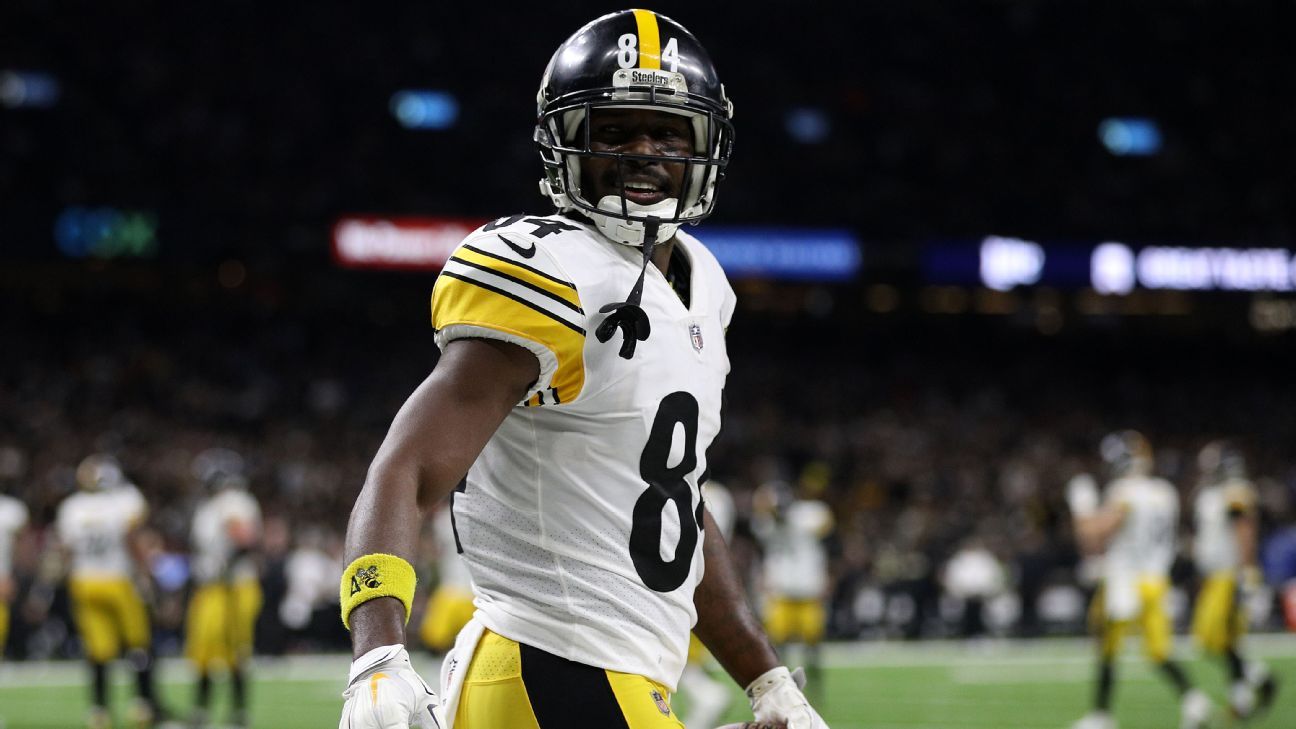PITTSBURGH — Antonio Brown wants out.
No more Photoshopped images of him in a San Francisco 49ers jersey or a FaceTime session with Jerry Rice to send his message. Brown was blunt Tuesday in a farewell social media video thanking the Steelers fans for nine years, along with the hashtag #NewDemands.
This has bubbled for awhile. Brown has been unhappy, and agent Drew Rosenhaus told the Steelers of Brown’s position in late January.
As long as the Steelers get adequate draft capital for Brown, the All-Pro has played his last down as a Steeler. It’s over. Let’s leave the slightest wiggle room for an unprompted hug-it-out session, but that’s unlikely now.
Since everyone’s pretty clear on how things got here, let’s take a hard look at what’s next.
What do the Steelers want for Brown?
Most likely a first-round pick. That might be difficult with Brown’s antics and off-field legal issues, but the team believes Brown is too good not to get high-end capital.
“They will want a 1,” said an NFL general manager.
Brown’s palatable salaries of $12.625 million next year, $11.3 million in 2020 and $12.5 million in 2021 could entice teams to make a stronger offer — unless Brown wants to negotiate a new deal, though he may not have much power in that case.
What can the Steelers realistically expect?
This answer will crystallize at the NFL scouting combine later this month, but two high-ranking NFL execs say if trading for Brown, they would probably give up a Day 2 pick (second or third round) for his services. One said that could fall to a fourth-round pick, depending on what’s discovered in the process.
Considering the cultural cost of keeping Brown on the roster, a Day 2 pick would have to get the job done if it’s the best offer.
When can both sides expect a trade?
Between March 13-16 is a good starting point. A trade can’t be executed until the start of the new league year March 13. And of course there’s Brown’s $2.5 million signing bonus due March 17.
If they don’t want to pay that money or endure the headache of keeping Brown on the roster, then that is the window.
But two teams can always agree to a trade in principle before March 13. That was the case with the Kansas City Chiefs and Washington Redskins in the Alex Smith trade last year.
0:37
Darren Woodson questions Steelers WR Antonio Brown’s trade request because he can’t think of a better situation for AB.
What are the financial implications of the trade?
The Steelers would absorb $21.12 million in dead money by trading Brown. Luckily for the Steelers, Brown’s cap hit of $22.165 million would go off the books and essentially offset the dead money.
If Brown is on the roster after March 17, not only do the Steelers pay him, but the amount also hits their salary cap.
But here’s a creative accounting option for the Steelers, via ESPN’s Dan Graziano: Trading Brown after June 1 allows the Steelers to spread the cap hit over multiple years. They’d be keeping a disgruntled player on the roster well into the offseason program but could create more than $10 million in immediate cap relief.
The Steelers would be quite stubborn to dig in on this method. And the proverbial distraction wouldn’t dissipate any time soon.
How do the Steelers replace him?
Cue the crying emoji. Players of Brown’s caliber are not replaced. Rather, the Steelers will retool the offense this offseason and rely on a more balanced attack led by JuJu Smith-Schuster.
It’s wild to think the Steelers are losing two top-10 players in their prime in the same offseason, but here we are with Brown and Le’Veon Bell.
The Steelers have a chance in every game with quarterback Ben Roethlisberger, who led the league in passing last year with 5,129 yards. They will expect a sizable jump from James Washington in his second season. James Conner and Jaylen Samuels will hold down the running game. Tight end Vance McDonald‘s role will expand. Then, the Steelers can use a draft pick from the Brown trade to land a playmaker.
The free agency crop of receivers is not packed with star power, but they could comb for potential deals on a deep threat such as John Brown or a steady all-around player such as Randall Cobb or Tyrell Williams.
What does this mean for Smith-Schuster?
That’s easy — he’s expected to be the Steelers’ No. 1 option. The next step in Smith-Schuster’s evolution is showing he can beat top corners without Brown drawing attention.
He sounds ready.
“It’s a responsibility every receiver loves to have,” said Smith-Schuster from the Pro Bowl.
